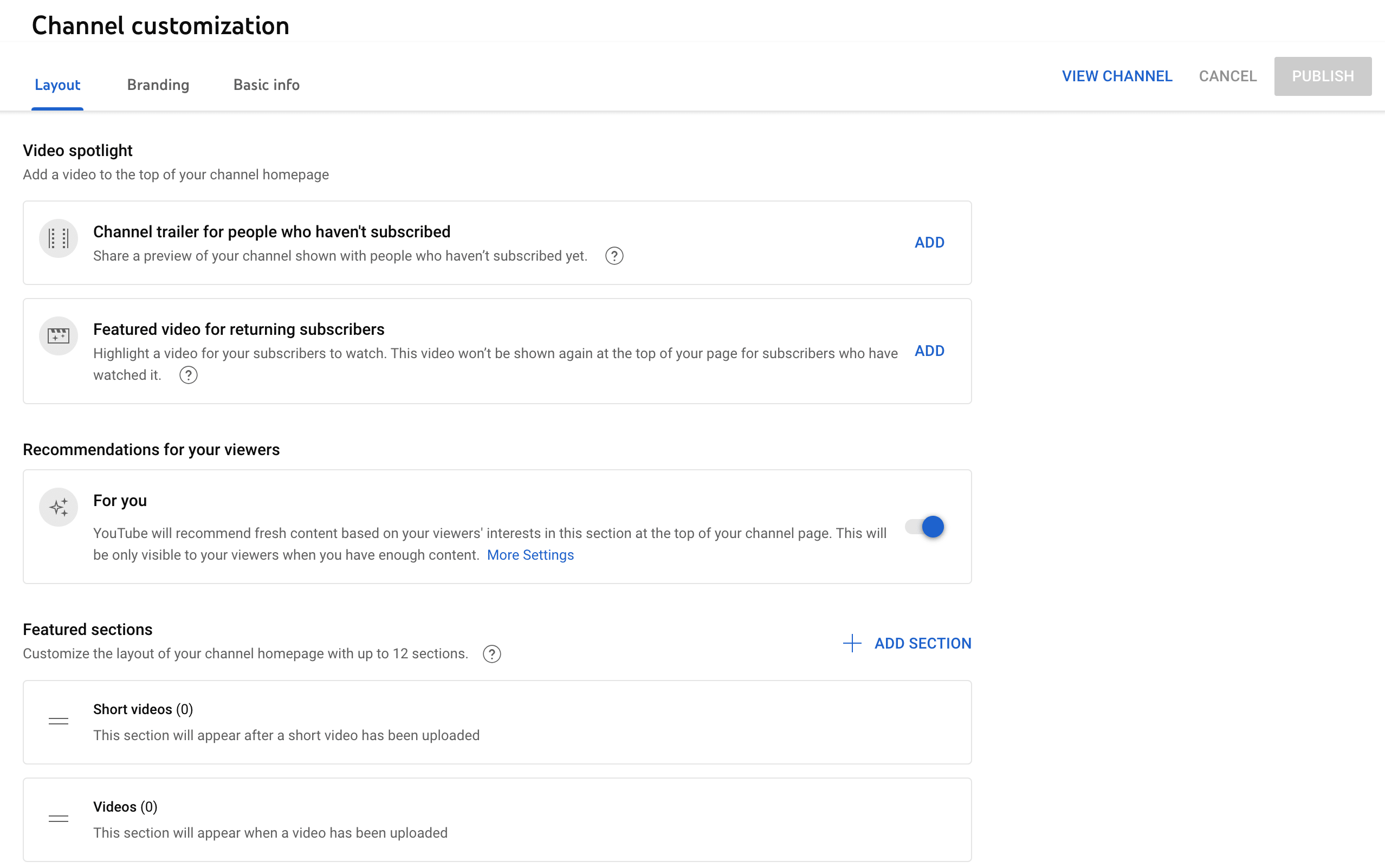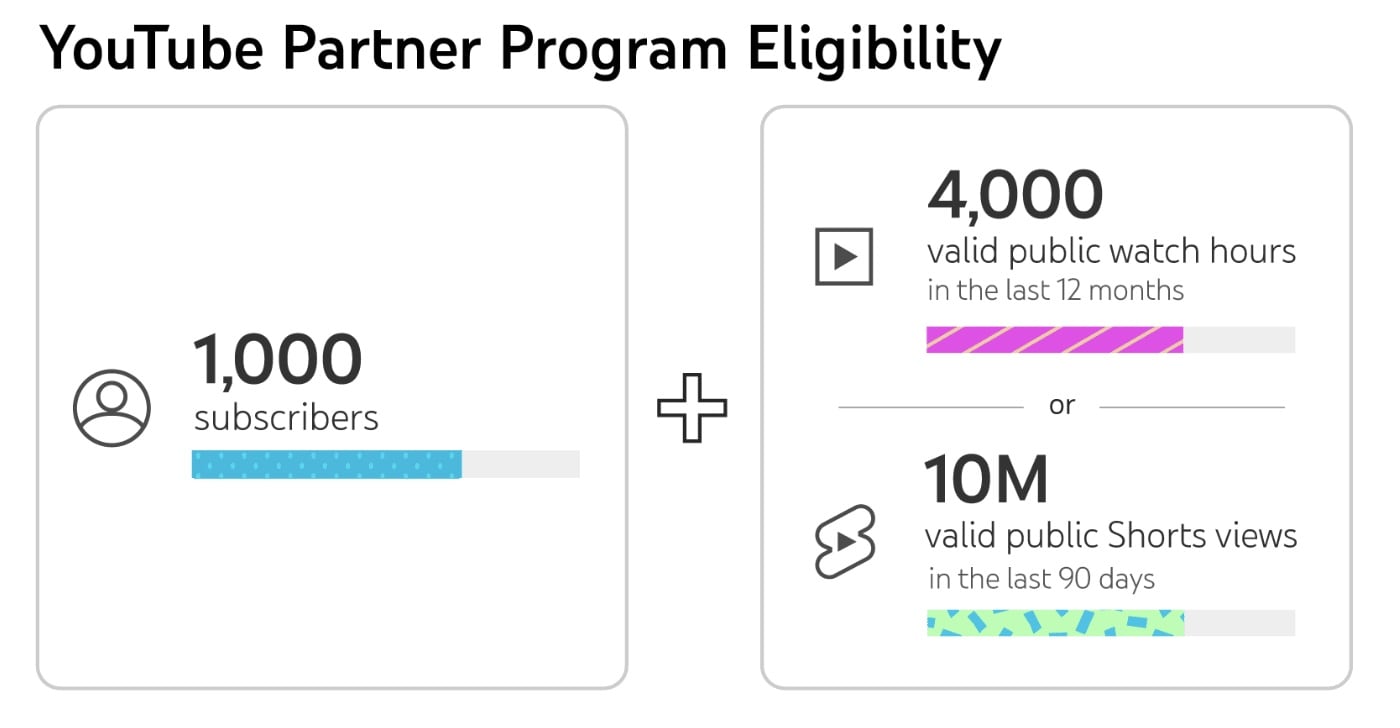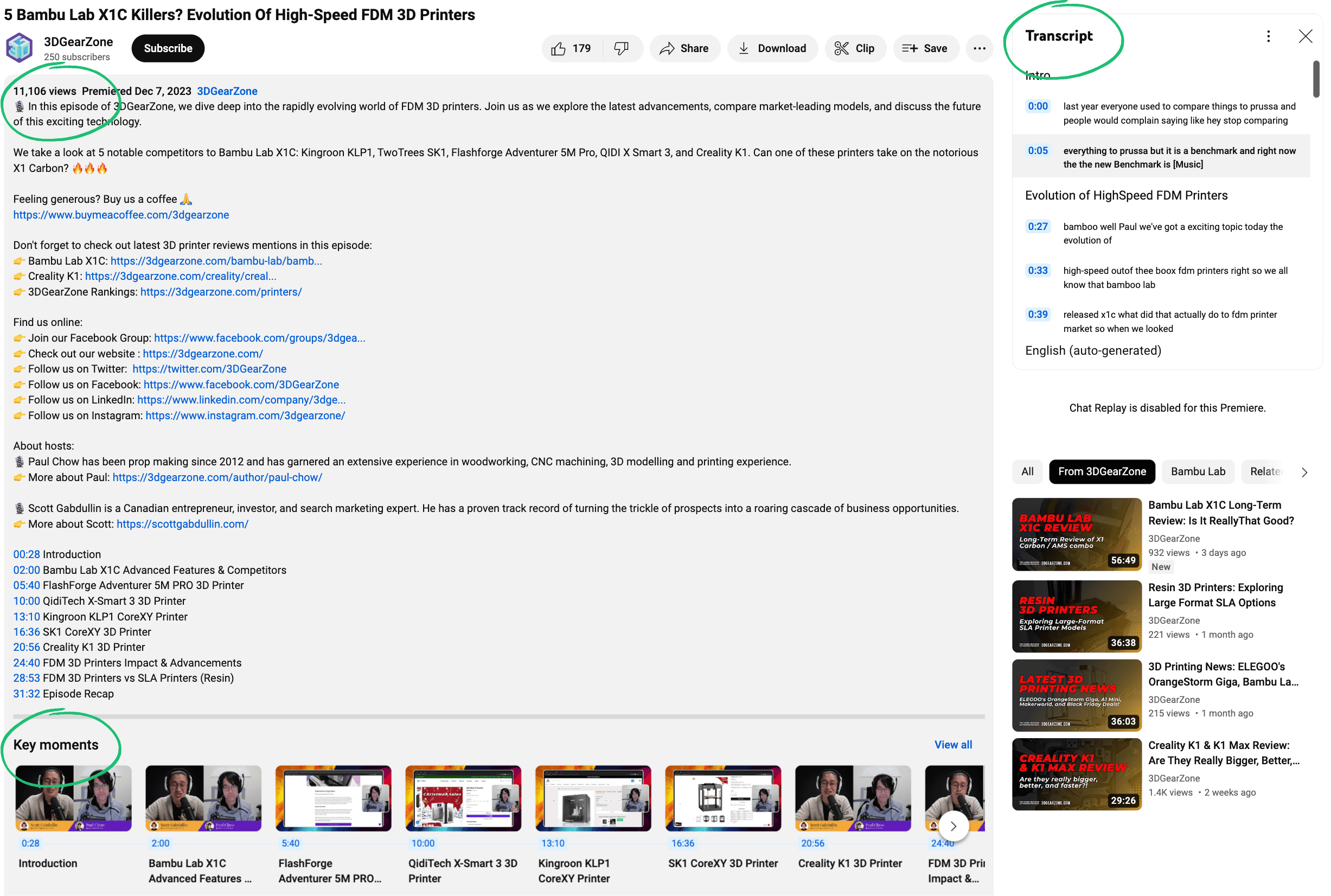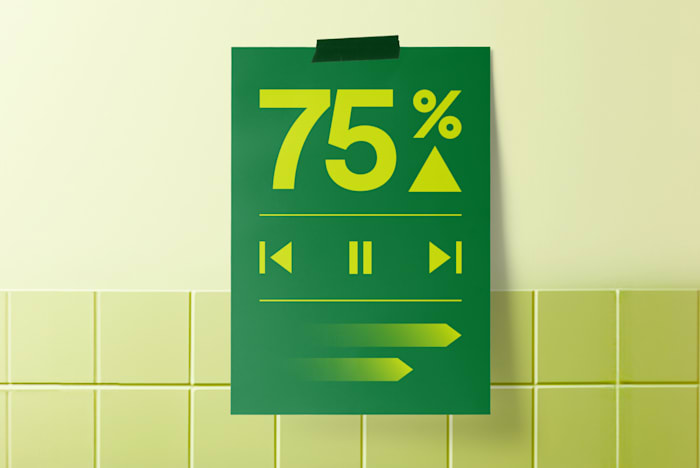How to Become a YouTuber: Steps, Expert Tips, and Checklist
Anyone can become a YouTuber, but if you follow these steps and expert times, you can generate income from your channel and stand out from the competition.
 April 5, 2024
April 5, 2024 8 minute reading
8 minute reading
With the rise of video’s popularity coupled with YouTube’s monetization options, it’s no wonder more brands want to establish a presence on this social media platform.
Becoming a YouTuber isn’t rocket science, and any creator or business can get started on the platform in several easy steps.
In this guide, we’ll show how to build your YouTube channel from the ground up and what tips industry experts have for newcomers.
What is a YouTuber?
A youTuber is any business or individual who uploads videos to the platform. But, those looking to take their channel to the next level usually have larger goals in mind. YouTube is a great avenue for additional revenue, and the perfect place for potential customers to discover your brand.
Whether you’re wanting to advertise on YouTube, become a YouTube influencer, or use YouTube for business, it’s worth taking the platform seriously and following our step-by-step guide to becoming a YouTuber.
Hire a YouTube expert on Fiverr
11 steps to become a YouTuber
Anyone with a phone can become a YouTuber today. The hard part is attaining success on YouTube. Here are 11 simple steps that’ll bring you closer to achieving your YouTube goals.
1. Pick a niche
There are more than 114 million active YouTube channels. Don’t let that number scare you—instead, let it push you to make your channel stand out. The best way to achieve success on the platform is to solidify a niche. This way, you can cater your content to a more specific crowd rather than competing with every channel out there.
2. Set your goals
Know your purpose for becoming a content creator. Is it to promote your business, go viral, or connect with other YouTubers? Your answer to this question will shape your strategy on the platform and determine the type of content to upload.
Here are questions to ask yourself when setting your goals:
Do you want to entertain or educate?
Is your channel tied to another entity, like a business?
Who's your target audience and what type of content do they want to see?
How often can you realistically post new content?
What’s your main call to action?
3. Analyze your competition
Do research to see who the biggest channels are in your industry, and see why they’re so popular. What kinds of videos are they making? What are they doing right, and where do you see room for improvement? Don’t copy the competition—take note of what works so you can produce quality content that stands out.
4. Create a YouTube channel
All you need to create a channel on YouTube is a Google account. Once you have one, the process is simple. Pick a memorable, relevant channel name. YouTube gives you all the necessary tools to personalize your page and set up your branding.

Need help setting things up? Here’s how to start a YouTube channel in six easy steps.
5. Set a content schedule
One of the biggest mistakes new YouTube accounts make when starting is inconsistent posting. Before you upload your first video, have a plan for your next video—and the one after that. Audiences respond well to consistency, so don’t upload until you can commit to a schedule. Set up a content calendar and create templates for different video formats.
Here are video ideas to include in your content calendar:
Tutorials
Collaborations
Live streams
Interviews
Podcasts
Trends
6. Invest in quality equipment
All you need is a phone to record, but many popular channels use top-end software and equipment—especially if you’re a vlogger. There’s no need to spend thousands before getting started, but invest in a few essential pieces to elevate your video production quality.
Some examples of beginner-friendly YouTube equipment are:
Microphone
Good lighting
Tripod
7. Optimize your videos and channel
Around 3.7 million new videos are uploaded to YouTube everyday. If you don’t put effort into video search engine optimization (SEO), your YouTube content will get lost in the YouTube algorithm.
Here are a few basics to improve your video SEO:
Include custom thumbnails
Use tags and hashtags
Put keywords in the video description
Include transcripts and closed captions
8. Monetize your YouTube channel
One quick way to make money on YouTube is joining the YouTube Partner Program. You can qualify after you have a certain amount of subscribers and watch hours. But, are you still wondering how to make money through other channels? Many YouTubers are full-time and have other creative ways to add additional income.
Some examples of multiple income streams include:
Offering channel memberships
Finding sponsorships
Making ad revenue
Creating an AdSense account
Participating in affiliate marketing
Setting up a Patreon
Selling merch

Graphic depicting the requirements to reach YouTube Partner Program’s eligibility standards.
9. Foster community among your audience
A loyal community can take your YouTube career to the next level. Partake in community management to increase your engagement rates. If producing high-quality videos and running a YouTube channel—along with a small business—sounds like a lot of hard work, partner with a community management freelancer.
10. Promote your videos
Just like video SEO, promoting your YouTube videos is crucial to attract new viewers. If you’re active on other social media channels, this can be a great opportunity to cross-promote. But, be careful with how you promote.
For example, to attract Tiktok users to long-form youtube videos, you can create snippets to share on TikTok. This works because TikTok is renowned for its bite-sized content.
11. Analyze your metrics
Review your YouTube analytics to find areas to improve. This will pinpoint what you’re doing right, and what you may be doing wrong. Experiment with different video formats or intros and see how they perform.
Some metrics to pay attention to are:
Watch time
Retention
Click-through rate
Top equipment and software successful YouTubers use
You don’t need fancy tools to build a home YouTube studio, but better production equipment and editing software elevates your videos.
Here’s the top equipment used by successful YouTubers.
Lighting
The type of videos you film will determine the best lighting. If you’re a vlogger or a beauty guru, a ring light is a popular choice. Other YouTubers opt for softboxes, which are a bit more expensive, but provide a softer light than a ring light. Note: Some ring lights can also be a tripod, which saves you money.
Camera
Today’s smartphones gave top-tier cameras, so many YouTubers use them for content creation. Other, more high-end options are DSLR cameras. If you’re focusing on gaming or live-streaming at home, then a webcam works.
Microphone
Bad audio can turn an excellent video into an awful one. If filming on a phone, connect a microphone to adequately capture audio. YouTubers on a smaller budget use airpods or tiny microphones that connect to their phone, while more high-end YouTubers opt for microphones like the Blue Yeti.
Editing software
It’s important to edit your video and audio before uploading. If you don’t have the budget for editing software, partner with an audio editing or video editing freelancer. And if you’re intimidated by the thought of learning how to edit a YouTube video, don’t worry, it’s not too difficult. There are free Chrome extensions that boost productivity for YouTubers.
Here are several popular free and paid editing software:
Final Cut Pro (paid)
iMovie (free)
Adobe Premiere Pro (paid)
InShot (free)
YouTubers are turning to AI video editors to polish videos and automate part of the YouTube creation process.
Expert tips for creating a successful YouTube channel
There’s no secret formula to attain success on the platform. But according to some industry experts, a good YouTube channel—and a well-performing YouTube video—all share a few things in common:
Well-researched and strategically placed keywords
A focused niche that aims to educate or entertain the target audience
Accessibility with captions, transcripts, and cards
“I use targeted keywords throughout the video script, ensure my content is accessible with closed captions, and leverage YouTube's built-in features like playlists and cards to guide viewers to related content,” says Paul Chow, the CTO and Co-founder of 3DGearZone, a 3D printer review company.
“Take this video for example. It tackles an in-depth comparison of 5 notable competitors to Bambu Lab X1C, and it sparked conversation from viewers It got 11k views, positive comments, and a 20% increase in website traffic from people interested in my products. It's a constant reminder that sometimes, focusing on adding value for your audience is the best way to grow your channel.”

The video by 3DGearZone uses YouTube’s built-in features to create a more enjoyable viewing experience for its audience.
An example of capitalizing on keywords and search volume is the Short The Social Shepherd released the same day Threads came out.
“We knew people would be searching for more information about this new platform, so we shared an educational and entertaining video about it,” says Mireia Boronat, content marketing manager at The Social Shepherd. “The caption included the keyword 'Threads' while still questioning how much users knew about the platform, which intrigued them to watch the full video. It was our best-performing Short, which was then followed by a part two (the second best-performing Short on our channel).”

The video that capitalized on keywords and search volume received more views than other Shorts.
“In the beginning, it’s best to target specific keywords for your videos. That requires picking a niche and using YouTube-suggested searches to guide your video content,” says Nathan Gotch, founder of Gotch SEO.
“Don’t be creative on this front. Pick a long-tail keyword and build your entire video around it. Place the keyword phrase in the video title, description, and tags. Repeat this process for your first 25-50 videos.”
Checklist for becoming a YouTuber
To sum everything up, we’ve created a helpful checklist so you can make sure you’ve got everything covered when it comes to becoming a YouTuber.
Pick a niche
Set your goals
Define your target audience
Analyze your competition
Create a YouTube channel
Come up with a memorable channel name
Include your branding
Set a content schedule
Publish a variety of video ideas
Invest in equipment
Camera
Lighting
Microphone
Software
Optimize your videos
Include custom thumbnails
Include transcripts and closed captions
Conduct keyword research
Monetize your YouTube channel
Join YouTube Partner Program
Find sponsors
Partake in affiliate marketing
Foster community among your audience
Promote your videos
Analyze your metrics
Become a YouTuber with the help of freelancers
No one skyrockets to MrBeast's level of popularity overnight—not without a team backing them. If you don’t have the resources to build a full-time team of employees, turn to freelancers to do some of the heavy lifting.
Join Fiverr and access a global marketplace of talented freelancers who can write video scripts, manage your YouTube channel, and edit your audio.



